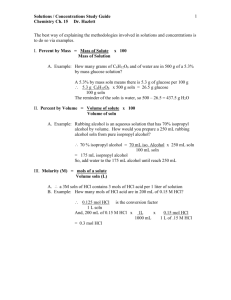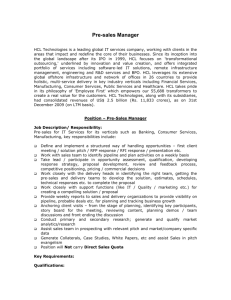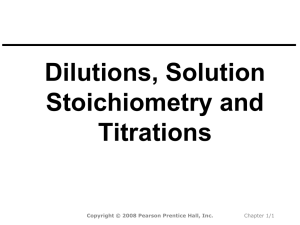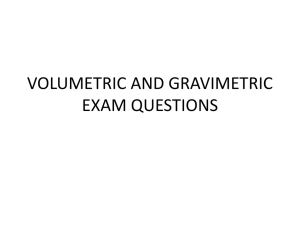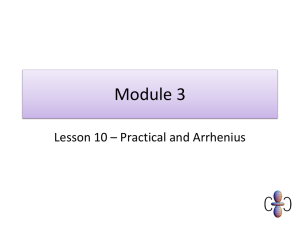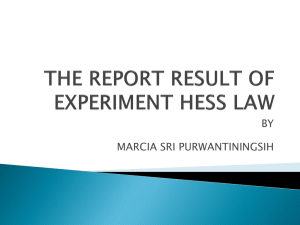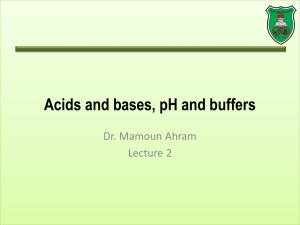Solving Example 7.6 p.273 Jespersen 6th Edition
advertisement
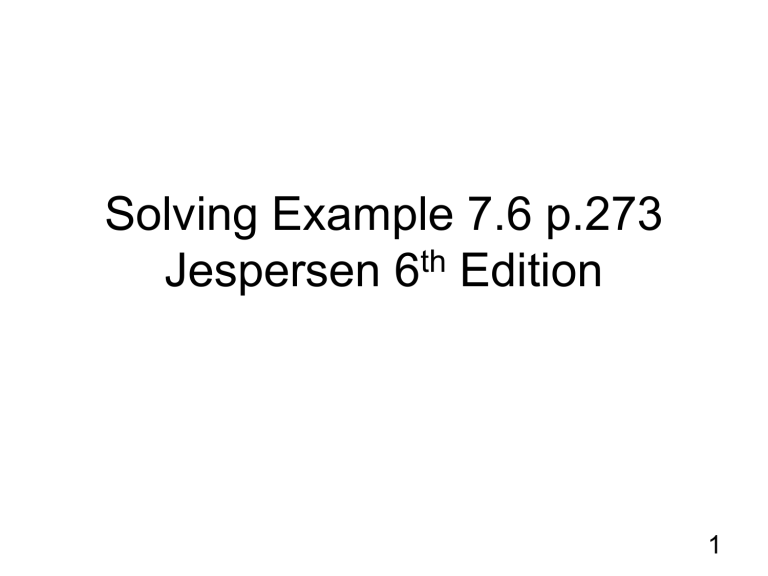
Solving Example 7.6 p.273 th Jespersen 6 Edition 1 Example 7.6 p.273 HCl(aq) + NaOH(aq) H2O(l) + NaCl(aq) A student placed 50.0 mL of 1.00 M HCl at 25.5oC in a coffee cup calorimeter. To this was added 50.0 mL of 1.00 M NaOH soln also at 25.5oC. The mixture was stirred and temp quickly increased to a max of 32.2oC. What is ΔH in kJ per mole of HCl? Because the solns are relatively dilute, we can assume that their specific heats are close to that of water, 4.18 J g-1 oC-1. The density of 1.00 M HCl is 1.02 g/mL and that of 1.00 M NaOH is 1.04 g/mL. (We will neglect the heat lost to the Styrofoam itself, to the thermometer or to the surrounding air.) 2 HCl(aq) + NaOH(aq) H2O(l) + NaCl(aq) 50.0 mL 50.0 mL 1.00 M 1.00 M 25.5oC 25.5oC 32.3oC s of solutions = 4.18 J/(goC) D=1.02g/mL 1.04 g/mL Question with 2 systems, so q = –q qrxn = – (qsoln + qcalorim) for coffee cup calorimeter qcalorim = 0 J 3 (Styrofoam cups do not absorb much heat.) qrxn = – (qsoln + qcalorim) qrxn = – (qsoln + 0) qsoln = s m T where s = 4.18 J/(g.oC) m= mass of soln = ? T = (32.2-25.5)oC = 6.7oC Mass of soln = massHCl + massNaOH m of HCl = 50.0 mL HCl x 1.02 g/mL = 51.0 g m of NaOH = 50.0 mL NaOH x 1.04 g/mL = 52.0 g m of soln = 51.0 g + 52.0 g = 103.0 g qsoln = s m T = (4.18 J/(g.oC))(103.0g)(6.7oC) = 2,884.6 J = 2.88 kJ Ques asked for H in kJ per mole HCl. Is this for 1 mol HCl? NO! Our ans of 2.88 kJ is for how many moles? x mol HCl = 0.0500 L x 1.00 mol HCl/L = 0.0500 mol HCl 2.88 kJ x kJ 1 mol HCl = 57.6 kJ 0.0500 mol Is that H ? ... Not quite... q rxn = - q soln = - 58 kJ/mol HCl Ans. H = - 58 kJ/mol HCl For an open vessel, q = H 4


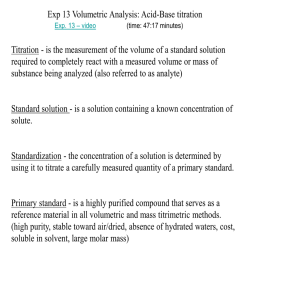
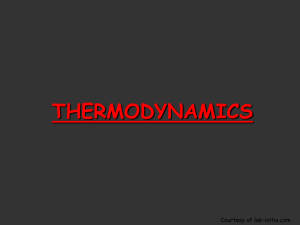
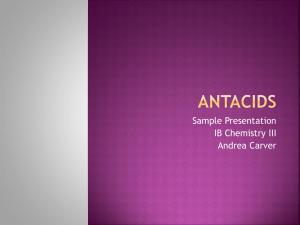
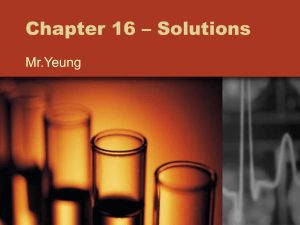
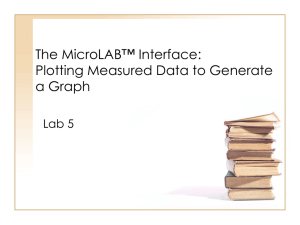

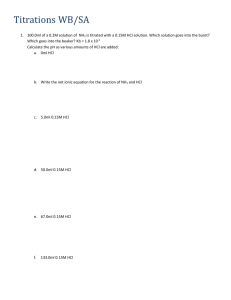

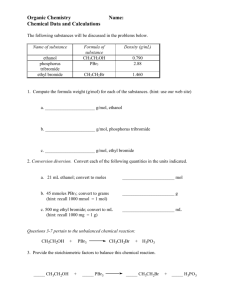
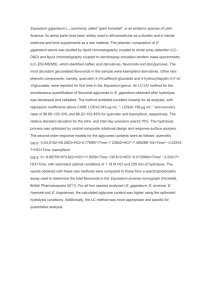
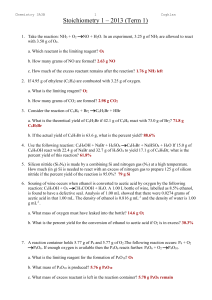
![pH = - log [H + ]](http://s2.studylib.net/store/data/005622524_1-002df1ea50d2a849b15deb604928664e-300x300.png)
